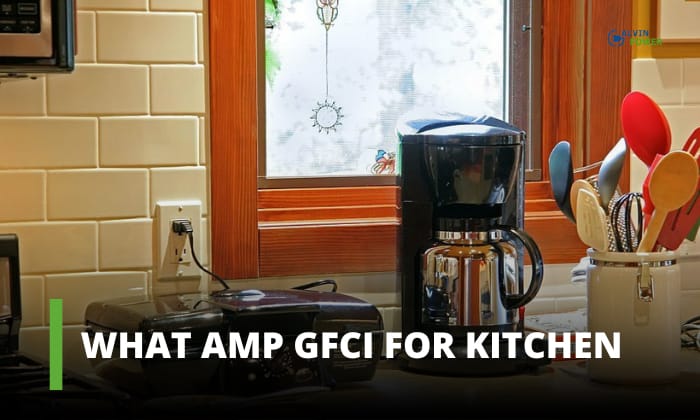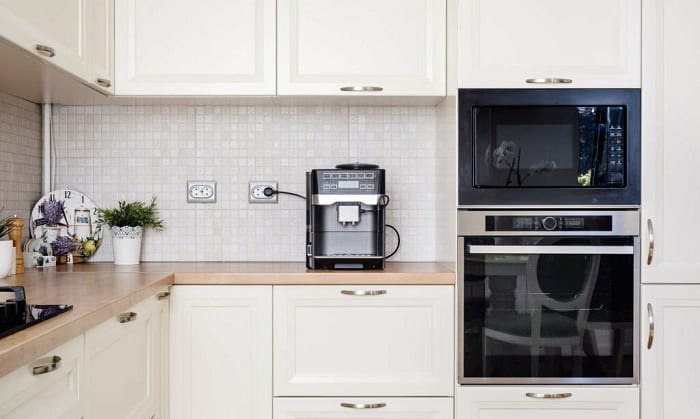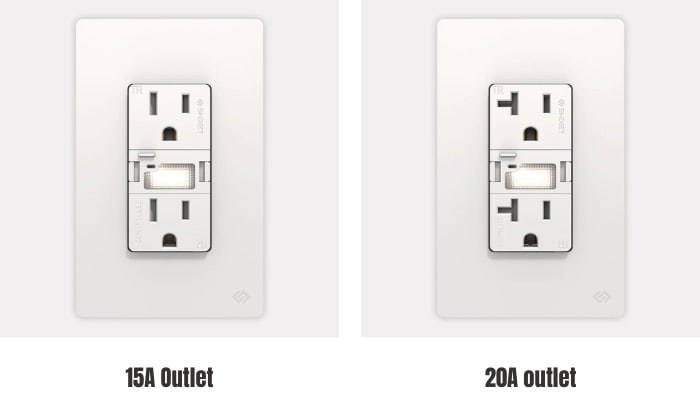The kitchen is a place that contains various appliances that require ground fault or GFCI protection. In this case, have you ever wondered what amp GFCI for kitchen is ideal?
Among professionals, a 20 amp circuit is the most recommended option for the kitchen electrical system. But why is this particular amperage the favored choice? Let us discover the reasons why below.
Table of Contents
Amp Requirements for Kitchen Appliances
When it comes to powering the equipment in a residential kitchen, a well-planned electrical system is essential. This implies a combination of dedicated circuits for high-power devices and general circuits for lighting and lower-power equipment.
- For general lighting in your kitchen, a 15-amp circuit is often the minimum requirement.
However, for providing flexibility and safety in circumstances involving many lights and prospective expansions, a 20-amp circuit is a wise choice.
- In addition, many small kitchen equipment, such as toasters and blenders, may work safely on a 15-amp circuit.
However, electrical standards typically require at least two 20 standard amp circuits to accommodate the combined needs of these small gadgets, ensuring that they run properly without overwhelming the electrical system.
- Conversely, high-power kitchen appliances often demand dedicated 20-amp circuits or even higher. These circuits are designed to handle the substantial electrical loads generated by appliances such as stovetops.
Please note that certain circuits are not required to be GFCI-protected. Some examples include fridges, which typically demand AFCI protection only, and electric ranges, which use 50 amp non-GFCI circuits.
Usually, all outlets on countertops and near water must have ground fault protection.
Reasons Why 20 Amps Are Standard for Kitchen Appliances
When we compare a 15A vs 20A outlet, the choice for 20-amp circuits in kitchens arises from a fundamental need for safety and efficiency. This is because most kitchen equipment requires 20 amps or more current to work safely and properly.
Using a conventional 15-amp outlet to power most kitchen appliances might result in overloads, potentially causing circuit breakers to trip or even exposing you to major electrical risks.
To ensure both safe functioning and peace of mind, it is critical to grasp the significance of matching the electrical capacity to the demands of your kitchen equipment, considering the NEC kitchen outlets electrical code.
What Appliances Need 20 Amp Circuit
To ensure the safe and efficient operation of your kitchen, it’s essential to know which appliances necessitate a dedicated 20-amp circuit. Here’s a list of common kitchen 20 amp appliances:
1. Refrigerator
For keeping our food fresh in the long run, fridges frequently necessitate a dedicated 20 amp circuit.
2. Dishwasher and Garbage Disposer
Dishwashers are built to handle large loads of dirty dishes and utensils.
They feature heating elements and powerful pumps that can demand a lot of current, so a 20-amp GFCI circuit is a good choice if the dishwasher shares a circuit with the garbage disposer (which has high surge current).
Otherwise, a separate 15 amp circuit will do, one for each appliance.
3. Microwave Oven
Microwaves vary in power, but larger and more powerful units can require a 20-amp circuit to handle their electrical needs safely.
A 20-amp circuit accommodates the microwave’s power requirements, allowing it to function seamlessly without causing overloads.
Is a 15 Amp Outlet Safe for Big Kitchen Equipment?
When it comes to powering major kitchen appliances, safety comes first. While 15-amp outlets are typical in most houses, they are usually not the safest option for high-power kitchen appliances.
This is because this circuit may not be able to handle the load required by some kitchen equipment.
Furthermore, electrical code compliance in many jurisdictions requires the use of correctly sized circuits (some with higher ratings than 15 amps) and outlets for specified appliances. Failure to follow these regulations may not only result in safety issues but also legal and insurance concerns.
Conclusion
In conclusion, determining what amp GFCI for kitchen should take into account the requirements of specific appliances.
Understanding the electrical requirements of your kitchen equipment isn’t just for convenience but also for its safety and efficiency. By aligning your electrical system with the demands of your appliances, you create a kitchen that not only operates efficiently but also prioritizes safety of those who use it.

I am Edwin Jones, in charge of designing content for Galvinpower. I aspire to use my experiences in marketing to create reliable and necessary information to help our readers. It has been fun to work with Andrew and apply his incredible knowledge to our content.




